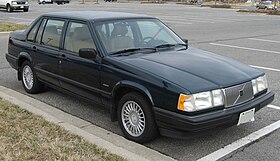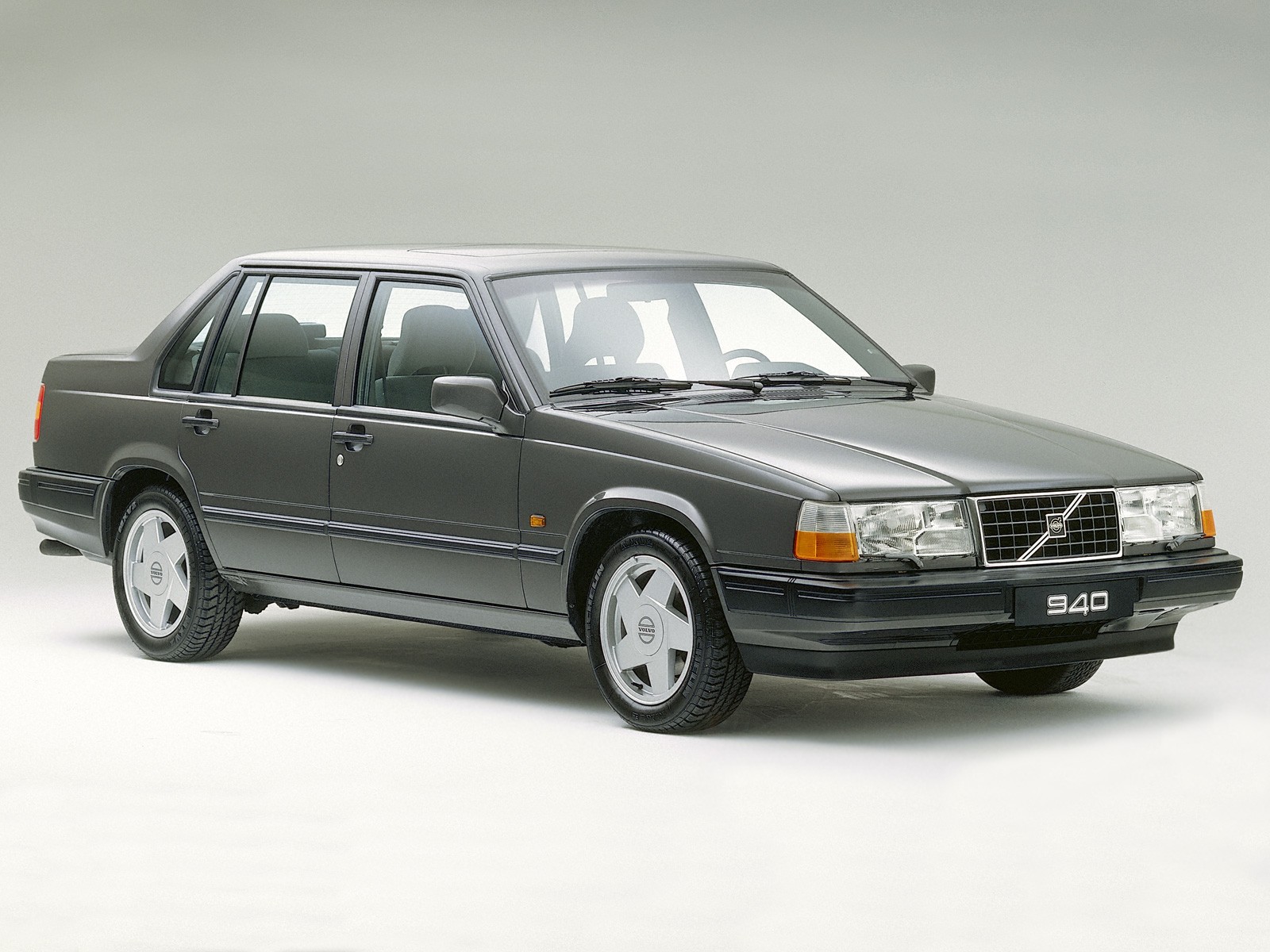| Volvo 940 Classic | |
|---|---|
 |
|
| Overview | |
| Manufacturer | Volvo Cars |
| Production | 1990–1998 |
| Assembly |
|
| Body and chassis | |
| Body style |
|
| Layout | FR layout |
| Powertrain | |
| Engine |
|
| Transmission |
|
| Dimensions | |
| Wheelbase | 2,771 mm (109.1 in) |
| Length |
|
| Width | 1,760 mm (69.3 in) |
| Height |
|
| Curb weight |
|




The Volvo 940 is among the last in the long-running line of large rear-wheel drive cars from Volvo.
Introduced in September 1990, the 940 was essentially a cosmetic reskin of the 740. All drivetrains, and most options available in the 940 had been available in the 740, with the exception of the 780 Coupé. The 940 was more closely related to the 740 than the 760, sharing the same dashboard, drivetrain choices, and sheet metal from the A-pillar forward. In contrast, the 960 was an evolution of the 760. The 760 / 960 front sheet metal, independent rear suspension, dashboard, and other interior features were all exclusive to the two upscale models. The estate, introduced in May 1991, was even harder to tell apart from its 745 predecessor.
The engines remained largely the same as for the 740, with 2-litre and 2.3-litre four cylinder gasoline engines, either naturally aspirated or turbocharged, as well as the familiar 2.4-litre Volkswagen six-cylinder diesel and turbodiesels being fitted. There were also sixteen valve versions of the gasoline engines, with a turbocharged version of the 2.0 16V available in some markets with tight tax limits, such as Italy, Belgium, and Portugal. An interesting version added somewhat later was a low-pressure turbocharged version of the B230 – maximum power was only up slightly, from 131 to 135 PS (96 to 99 kW), but torque increased throughout the range and the car suffered from virtually no turbo lag because of the small size of the charger. The 155 PS (114 kW) turbocharged 2.0 was first presented in February 1991, originally intended for Italy and other such markets it was later also installed in the British market 940 SE.
The SE badge was one of the more confusing badges. In the US, the 940 SE was in fact a 960 Turbo with the four-cylinder B230FT engine, the 940 SE badge presumably chosen by Volvo in order to maintain the link between name and number of cylinders. In Sweden, the 940 SE was an ordinary non-turbo 940 with some optional extras as standard, most notably painted mirrors and bumpers. In the UK, the 940 SE was a 2-litre Turbo with some extras as standard aimed specifically at the company car market as 2-litre engines receive a tax benefit. In Thailand the 940 SE was a Turbo (LPT) model with leather seats, ABS brakes and SRS Airbag.
North America
In the United States, the 1991 940 was offered in three versions: the 940GLE used a DOHC 16-valve version of the 2.3-litre engine with a 6,000 rpm redline. The 940 Turbo used a turbocharged 2.3-litre engine, and the top-end 940SE (turbo) included body-coloured trim, and the premium features (leather, power seats/moonroof, etc.) as standard equipment.
This is one of the Volvo vehicles that was produced at Volvo's former manufacturing facility in Halifax, Nova Scotia. In 1993, 940s built at that plant were affixed with roundels at the rear window, to celebrate the plant's 30th anniversary.
In 1991, the 940 GLE was downgraded with a 114 bhp 2.3-litre 4-cylinder engine and sold as the 940 GL (or basic 940 in some export markets). The 940 SE was in actuality a 960 Turbo sold as the 940 SE, while the 940 Turbo remained largely unchanged. Production of the 940 Series ended on 5 February 1998.









